A Local’s Guide to the Best Things to Do in Cuyahoga Valley National Park in Ohio
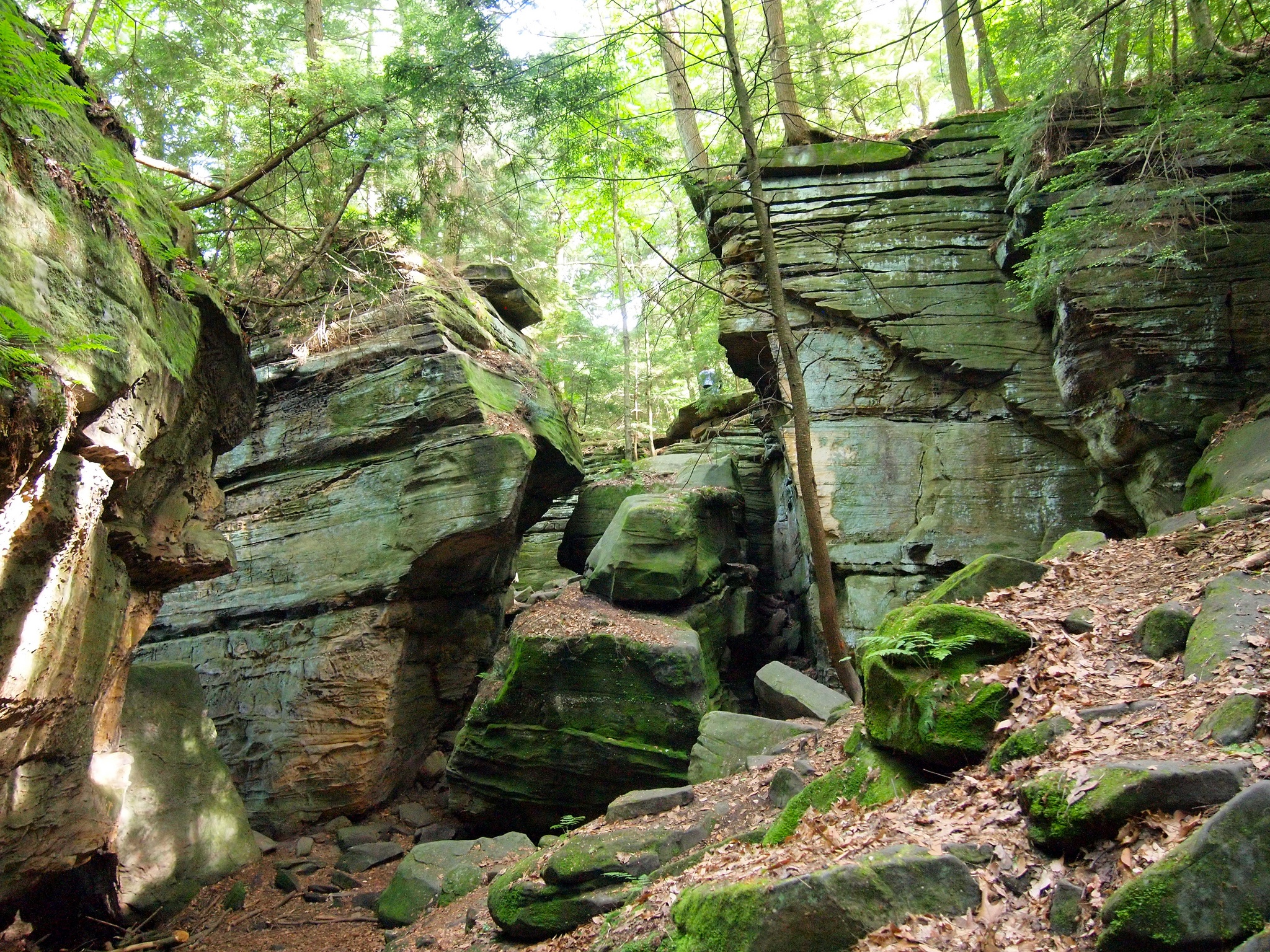
I've lived nearly my entire life in the northern half of Ohio – and a large portion of those years more specifically in northeast Ohio. And while many people overlook this part of the state, I have come to love the mix of urban areas AND natural spaces that this part of Ohio has to offer.
Northeast Ohio was once one of the most prosperous parts of America. When the Ohio & Erie Canal was completed in the 1830s, the city of Cleveland grew to be one of the largest (and richest) cities in the United States. But Ohio has never been *just* about it's cities.
I'm a big fangirl for Ohio cities like Cleveland – but I'm perhaps an even bigger fangirl for the parks and green spaces around it, including Cuyahoga Valley National Park.
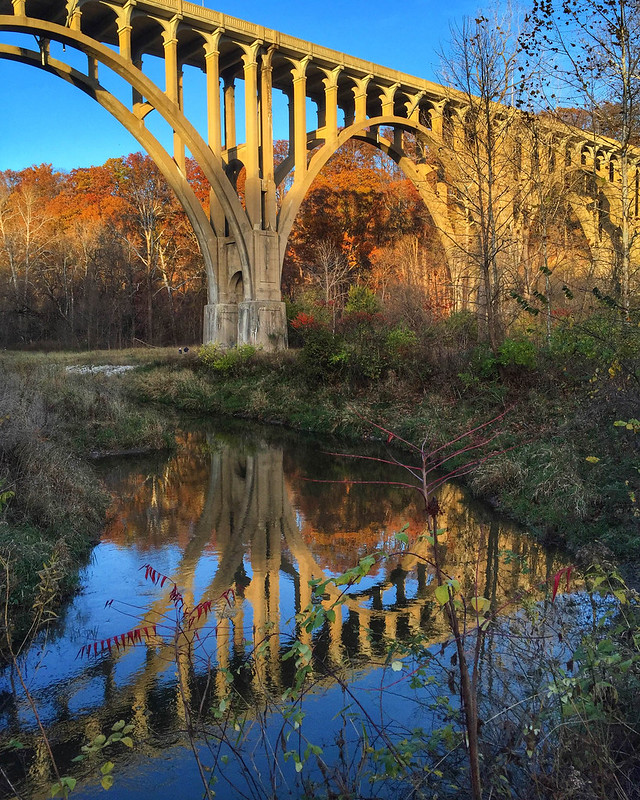
This (FREE) national park should not be missed if you're coming to Ohio!
Cuyahoga Valley: Ohio's only national park
Cuyahoga Valley National Park (CVNP) is the only national park in the state of Ohio. It stretches between Cleveland and Akron, following the Cuyahoga River through some beautiful sections of deciduous forest.
It was first established in 1974 as the Cuyahoga Valley National Recreation Area, and then was designated as a national park in the year 2000.
Cuyahoga Valley is somewhat unique in that it's more of an “urban park” because of its location; entrances are not far from the highway, and most people living in northeast Ohio are less than an hour's drive away from it.

Add to this the fact that CVNP is free to visit, and you get a park that is easily accessible and often visited by locals. In fact, the National Park Service lists Cuyahoga Valley as one of the most-visited national parks in the United States because of this – but don't worry; it's not a park that ever feels crowded.
These days, people head to the 50-square-mile park for outdoor activities like hiking and biking, taking advantage of the miles and miles of trails that take you through scenery that varies from marshy wetlands to mossy limestone ledges. There are even a few waterfalls!

Living so close to Cuyahoga Valley National Park now, I've become quite proud and protective of it. My husband Elliot and I are members of the CVNP Conservancy, and we take our bikes (or our hiking shoes) to the park as often as we can.
And now I'm on a mission to make sure other people fall in love with “my” park, too.
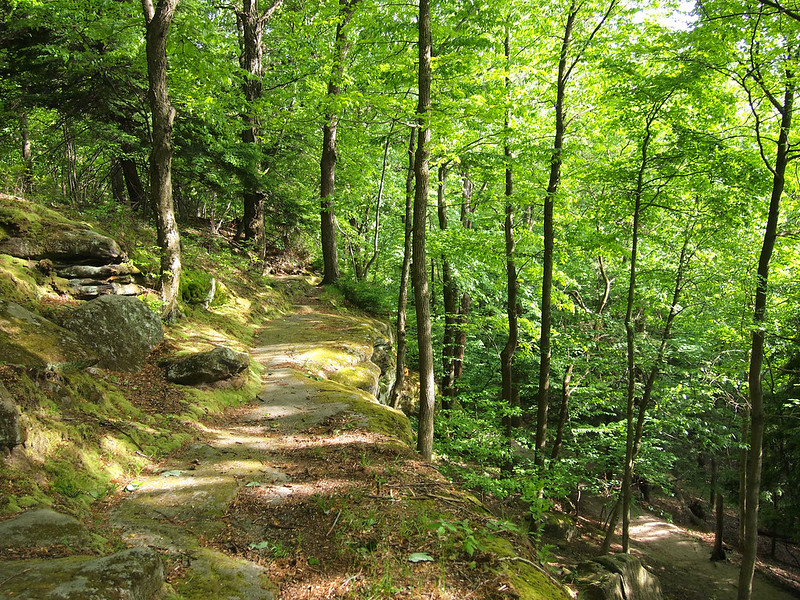
Top things to do at Cuyahoga Valley National Park
Visiting CVNP so often, I've developed some favorites when it comes to places to see and things to do. Whether it's by car, foot, bike, or train, here are all of my must-dos for a visit to Cuyahoga Valley National Park.
(And you can fit all of these into one day if that's all you have!)
(Note, I'm focusing on things to do in the spring, summer, and fall in this post, but you can also read about Cuyahoga Valley in the winter here.)
1. Hike Virginia Kendall Ledges
There are miles upon miles of hiking trails within Cuyahoga Valley National Park (over 125 miles of them, according to the National Park Service), but my favorite trail by far is the trail that takes you around the Virginia Kendall Ledges.
This 2.2-mile trail is a moderate one, taking you through a forested landscape dotted with gigantic limestone boulders, caves, and mossy cliffs.

This is one of my favorite places in the park to take photos! It looks different in every season.

The trail here takes you down into a small valley and back up again, ending at an overlook that's a popular spot to watch the sunset.
The hike is moderately difficult and is unpaved and uneven, so be sure to wear proper footwear!
Other hiking trails I really like within the park include:
- Buckeye Trail to Blue Hen Falls
- Deer Run Trail (located in O’Neil Woods Metro Park)
- Furnace Run Trail (especially in the spring to see wildflowers)
- Oak Hill and Plateau trails (which includes hiking through a pretty hemlock grove)

RELATED: The Best Hiking Trails in Cuyahoga Valley National Park
2. Visit Brandywine Falls
There are a handful of notable waterfalls within Cuyahoga Valley National Park, but the most famous is definitely Brandywine Falls.
This 65-foot-tall waterfall is easy to reach from a large parking area via a wooden boardwalk, and is great to see in every season.

There's also a longer trail you can hike here to see the waterfall from a few different vantage points, depending on how much time you have and how much of a challenge you want.
If you're interested in some of the other waterfalls in Cuyahoga Valley National Park that you have to hike to, I can also recommend Blue Hen and Buttermilk falls, as well as Great Falls of Tinkers Creek, which is located within Bedford Reservation.


3. Bike the Ohio & Erie Canal Towpath Trail
Since CVNP runs along the Cuyahoga River, this means that the river's history is also now part of the park's history. Back before the days of airplanes and reliable railroads, goods were transported throughout northeast Ohio using a canal system.
Today, the path that mules used to use to tow boats up the historic Ohio & Erie Canal in the 1800s has been turned into a multi-purpose hiking and biking trail.

The Towpath Trail is one of my favorite places for a bike ride, since it's mostly paved, mostly flat, and so very scenic. Elliot and I like to start in Peninsula for many of our rides since there are some shops and restaurants (shoutout to Winking Lizard!) near the trailhead.

And, if you don't have a bike of your own, you can rent one from Century Cycles in Peninsula. (They even rent e-bikes now!)
4. Visit the Canal Exploration Center
Speaking of the Ohio & Erie Canal, if you want to learn more about it and its history, the best place to do that in the park is at the Canal Exploration Center in Valley View.

Here, you can hear stories of people who lived and worked along the canal in the mid-1800s, including John Malvin, a free Black canal boat captain. You can also learn about the mules that used to pull boats along the canal, and see how the canal locks work (they even do demonstrations of Lock 38 on summer weekends).
You can also get on the Towpath Trail here, or hop on the CSVR. Which brings us to the next thing you can do…
5. Ride the Cuyahoga Valley Scenic Railroad

Cuyahoga Valley National Park is unique in that is also has a railroad running through it. The Cuyahoga Valley Scenic Railroad is extremely popular with park visitors, especially during the autumn when the park bursts into fall colors.
The railroad operates scenic rides, themed trips (such as their popular North Pole trip in the winter), and even has a Bike Aboard program where you can load up your bike, ride the train one way for a few stops, and then bike back to where you started for just $5. (You can also do this with kayaks, or just with your hiking shoes.)

If you want a scenic sightseeing ride through the park, book a “National Park Scenic” trip, either with a stop at historic Hale Farm or a stop for lunch in Peninsula. These are half-day trips with assigned seating, and you cannot get off the train at will.
If you want to be able to get on and off the train, you'll want to do the Bike Aboard or Hike Aboard option, where you ride the train one way and bike/hike the other. This option is best for people who want a taste of the train, but who don't want to spend the whole day riding it.

6. Shop at Szalay's
If you live in northeast Ohio, chances are you've heard of Szalay's Sweet Corn Farm and Market. During the summer months, this farmer's market is a great spot to either visit on its own, or to ride to on the Towpath.
Shop for colorful fresh produce and canned goods inside the rustic market barn, or grab a snack (grilled sweet corn is a must in the summer) and relax in the outdoor eating area, which features fun glider tables.
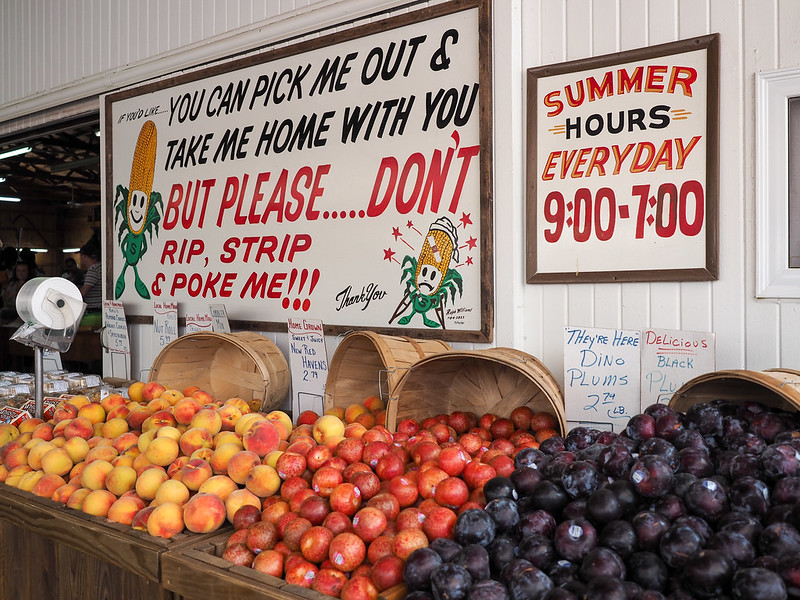
In the fall, Szalay's goes all-out with a fun, family-friendly corn maze, plus thousands of pumpkins for sale!
This farm market has been around since 1931, and to me is an absolute must-visit.

FAQ about visiting Cuyahoga Valley National Park
Here are some other things to know before you visit CVNP:
Where is Cuyahoga Valley National Park?
The park is in northeast Ohio, roughly following the Cuyahoga River between Cleveland and Akron. It covers about 50 square miles.
The park is is mostly run by the National Park Service, but there are a few sections of the park that overlap with Cleveland and Summit County metroparks, too.
What season is best to visit Cuyahoga Valley National Park?
Cuyahoga Valley National Park is open year-round!
The most popular seasons to visit are summer (when hiking trails are shaded and the train is running) and fall (when the forest gets painted in yellows, reds, and oranges), and these will be the busiest times in the park.
But you can also visit in spring (when trails can be muddy but there are lots of wildflowers blooming) and winter (when there can be snow, but the park is usually quiet).
If you live nearby, visit in all four seasons to see how different it looks!

In winter, there are also fun things to do like snowshoeing, cross-country skiing, and downhill skiing and tubing.
RELATED: Cuyahoga Valley National Park in the Winter: Your Ultimate Guide
How much does it cost?
It's $0! There is no entry fee to enjoy Cuyahoga Valley National Park or any of the connected metro parks.
How long should I spend at Cuyahoga Valley National Park?
You can see all the highlights at CVNP in 1-2 days. (If you want to do all the things I listed above, I would dedicate one day to doing some hikes and visiting waterfalls, and another day to the train and Towpath Trail.)
RELATED: Ultimate 1 Day Cuyahoga Valley National Park Itinerary
Where should I start?
The official visitor center for CVNP is at the Boston Store Visitor Center on Boston Mills Road. Here you can pick up park maps, get suggestions from NPS Rangers, and view a couple small exhibits on the park.

Can I rent a bike?
If you want to hit the Towpath trail but don't have your own bike, check out Century Cycles near the Peninsula trailhead/train depot for rentals.
How do you take the train?
The Cuyahoga Valley Scenic Railroad departs for scenic rides through the park anywhere from 2 to 4 times per day from June to October (and on weekends from January-May). The Peninsula Depot is the most popular place to board the train.
Where can I stay in Cuyahoga Valley National Park?
The park is large and covers a handful of cities; you can base yourself in Akron, Hudson, Peninsula, or even Cleveland. There are some places to stay within the park, too, like the Inn at Brandywine Falls and the The Inn at Blue Hen Falls.
If you're interested in an Airbnb or other vacation rental, check out this historic house in Peninsula, or this modern home in Brecksville.
And CVNP finally has a cool camping option now, too, at Valley Overlook. Along with primitive camping sites and some furnished 4-season cabins, they also offer luxurious glamping tents!
Can you camp at Cuyahoga Valley National Park?
The only camping currently available within the park is at Valley Overlook (which offers tent sites, glamping tents, and furnished cabins). There are several other private and state park campsites within driving distance, too. Refer to this list for suggestions from the National Park Service.
Have you ever been to Cuyahoga Valley National Park? If not, does this post make you want to visit?
Pin it for later:
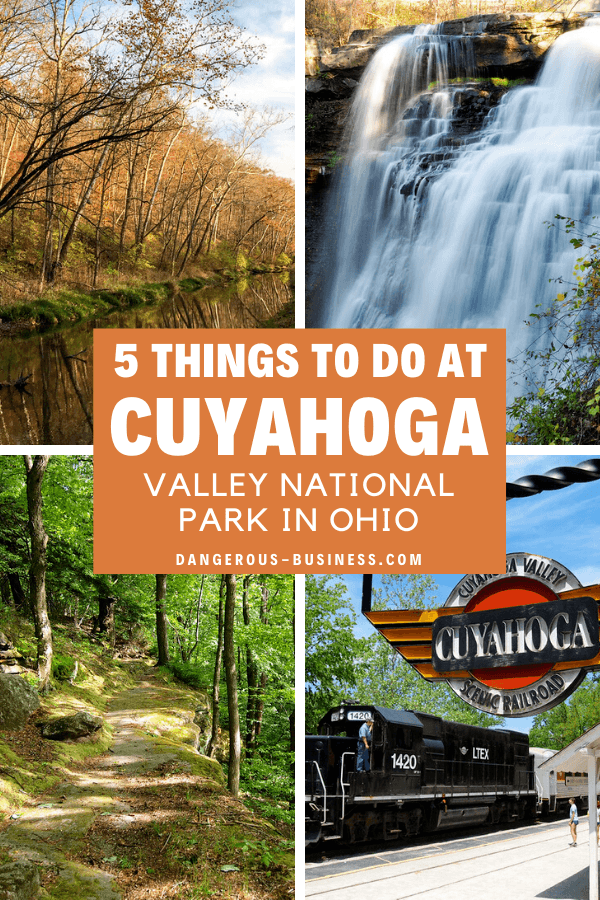
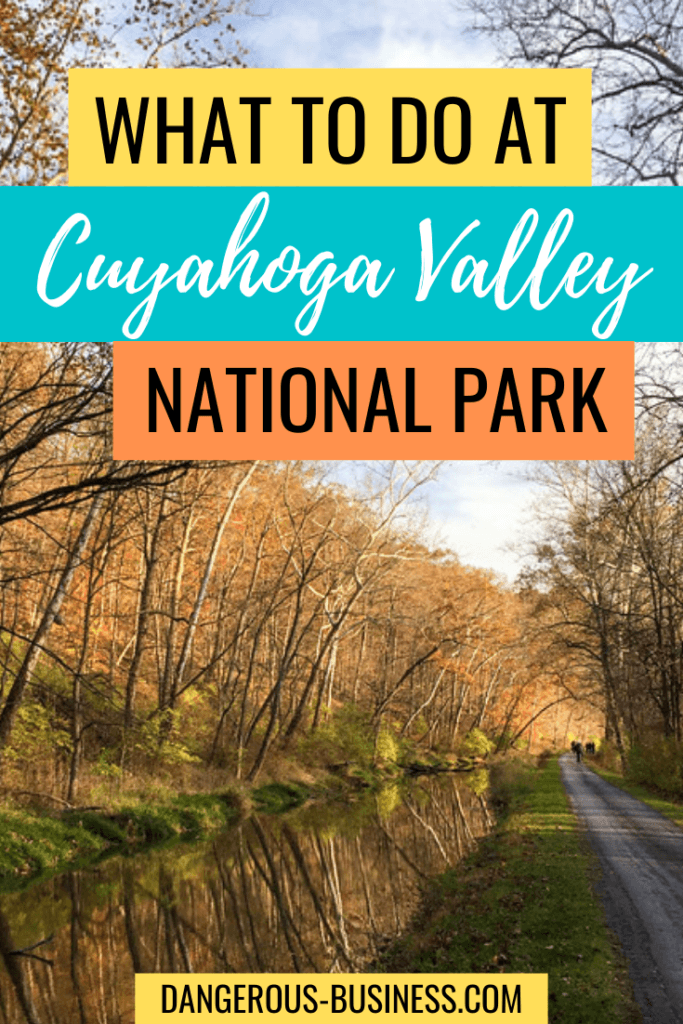

Amanda Williams is the award-winning blogger behind A Dangerous Business Travel Blog. She has traveled to more than 60 countries on 6 continents from her home base in Ohio, specializing in experiential and thoughtful travel through the US, Europe, and rest of the world. Amanda only shares tips based on her personal experiences and places she's actually traveled!










This was helpful information for our trip to Cuyahoga NP!
Thanks for CVNP info. My sister and I are planning to visit in autumn 2022.
I saw that you’ve written several pieces on conservation, and wonder if you’ve considered reporting on invasive species in Ohio locations. My niece, a PA Ag Dept employee, discovered Spotted Lanternfly in the Youngstown area during one of her field surveys, and I saw a video about its impact on forests and agriculture – vineyards, especially – at an Ohio rest area in ’21. You have the platform and audience to spread the word about all kinds of non-native dangers, and your conversational writing style would be effective.
My interest in this? Well, it’s my niece’s job. And, I participate in Texas prairie plant rescues and restoration.
Thanks, again
Hey Nancy! Invasive species are definitely an issue in a lot of states and national parks! I cover travel and tourism, though, so while I do often work in a bit about conservation and Leave No Trace in my blog posts, I’m definitely not a science writer or expert on those topics.